Menu
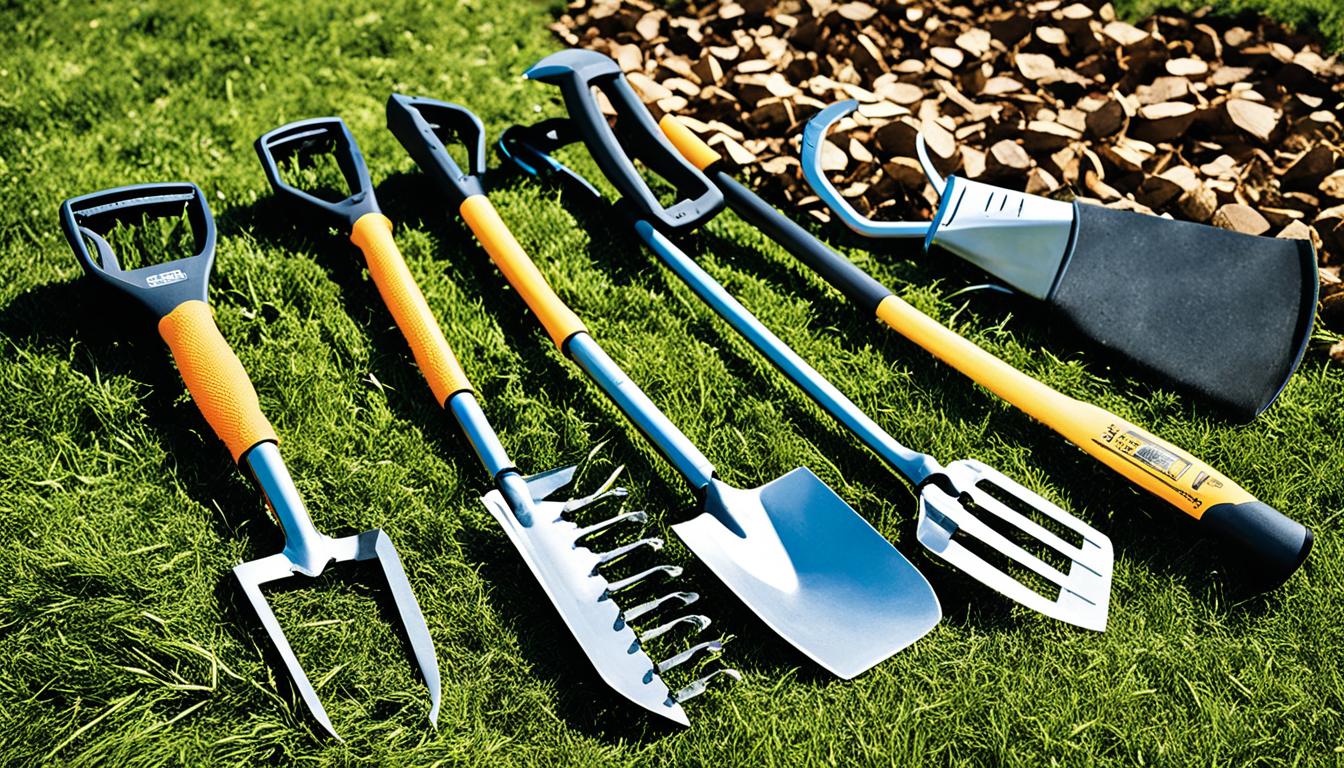
Farm workers often suffer from backaches and pain in shoulders, arms, and hands. One-third of missed work issues for these workers are due to sprains and strains. Another quarter miss work because of back injuries.
In California, farmworkers file more than 3,000 back injury claims every year. This adds up to over $22 million in workers’ compensation costs. These numbers show how serious the issue of work-related injuries is in the agricultural sector.
Work-related musculoskeletal disorders (WMSDs) are a big problem for farm workers. They are the main cause of disability for those in their working age. This not only affects the health of workers but also the profits of the farms they work on.
Ergonomics is the answer to these problems. It focuses on designing tools and work processes to fit the human body better. This can help prevent the injuries and strains farm workers face every day.
For example, keeping tools close by and at the right height can make a big difference. Making sure work is done in a way that doesn’t strain the body can help a lot. The size and shape of tool handles are important too.
The booklet ‘Simple Solutions: Ergonomics for Farm Workers’ from the National Institute for Occupational Safety and Health (NIOSH) discusses this. It shows that changing tools and how work is done can be very cost-effective. Not only does it protect workers’ health, but it also boosts productivity and profits for farms.
Farm work is tough, and the health of those working is often at risk. Many farmworkers suffer from backaches and pains in their shoulders, arms, and hands. These issues come from the hard work they do every day. The way agricultural tools are designed affects how healthy the workers’ muscles and bones are.
Farmworkers often have injuries like sprains, strains, and back problems. They get these injuries from doing the same motions over and over, lifting heavy things, and staying in uncomfortable positions for a long time. Many of these injuries happen because the work is very physically demanding. So, it’s really important to make the work easier on their bodies.
“It is critical to redesign tasks, reposition work items, and modify tools to alleviate the strain on farmworkers’ bodies,” notes experts from the National Institute for Occupational Safety and Health (NIOSH).
Standing for long periods makes legs swell more than walking does. So, it’s important to have jobs where workers can sit. This simple change can really help to keep farmworkers’ muscles and bones in good shape.
These injuries lead to farmworkers missing work. This makes it hard for them to earn money and for farms to stay productive. In California, just back injuries cost more than $22 million a year in workers’ compensation. This shows how important it is to make agricultural tools and work conditions better.
Also, a lot of disability during working years comes from muscle and bone problems at work. This is made worse when workers get paid for how much they produce. These problems lower how much work gets done. They also make it more likely for farmworkers to have health problems in the long run.
| Type of Injury | Frequency | Cost Implications |
|---|---|---|
| Back Injuries | 33% | $22 million annually (California) |
| Sprains and Strains | 33% | Significant work absences |
| Shoulder, Arm, Hand Pain | High prevalence | Decreased worker productivity |
Using the right tools and making work easier can reduce how many injuries farmworkers get. If farmers use tools that are better for the workers and change how they do things, working will be safer. This will help keep farmworkers’ muscles and bones healthy and make work safer for everyone.
Ergonomics is key in farming. It aims to make the work fit the worker better. This improves safety and work efficiency. Ergonomics looks at how the human body interacts with tasks, tools, and the work environment.
At its heart, ergonomics is about making work safer. In farming, every day, about 167 workers get hurt. Work injuries are often sprains or strains. These issues are much more common in farming than other jobs.
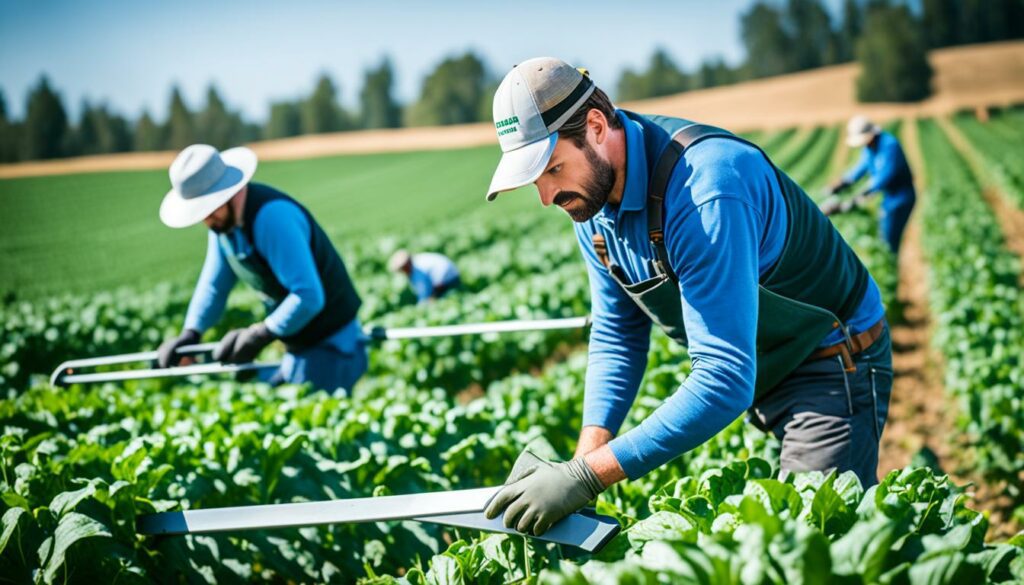
The main goal of ergonomic design in farming is to keep workers safe from injuries like WMSDs. Key approaches include:
Following these principles reduces WMSDs and makes work safer. It’s important for everyone involved in farming to follow these practices. It helps with worker health and the farm’s bottom line.
Research shows the need for ergonomics in farming. A study showed a big underestimation in farm injury numbers. Farm-related body injuries are much more common than in other industries.
NYCAMH in New York works to make farming ergonomics better. They do this by visiting farms and studying ways to improve. Their work highlights ergonomics’ importance in keeping farm workers safe and productive.
Having the right farm tools makes work easier and reduces strain. By making tools that fit people better and suit farm jobs, we can cut down on injuries. This change means fewer people will suffer from work-related muscle problems.
Farming tools should meet the needs of all farmers, including women. Women face many challenges in farming. They have less strength than men and different body shapes. Creating tools that work well for women helps make farming safer and more comfortable.
Research shows that tools made mainly for men can harm women. In response, Green Heron Tools, with the help of the USDA, makes special tools just for women. They use new technology to make and test tools that fit women’s needs.
Programs that support new farmers also teach about safe and efficient farming. They promote using tools with adjustable parts and better grips to avoid injuries. These programs help all farmers work better and stay safe.
| Ergonomic Requirement | Men | Women |
|---|---|---|
| Upper Body Strength | High | 40-75% less compared to men |
| Lower Body Strength | High | 5-30% less compared to men |
| Arm and Leg Proportion | Long | Proportionally shorter |
| Grip Size | Large | Smaller due to wider hips and narrower shoulders |
Custom-made farm tools that fit women’s needs make farming safer and more efficient. As more farms adopt these tools, every worker will benefit.
Farm work often leads to common complaints like backaches and hand pains. This shows why using tools right is so important. By placing tools correctly and taking enough breaks, we can lower the risk of getting hurt.
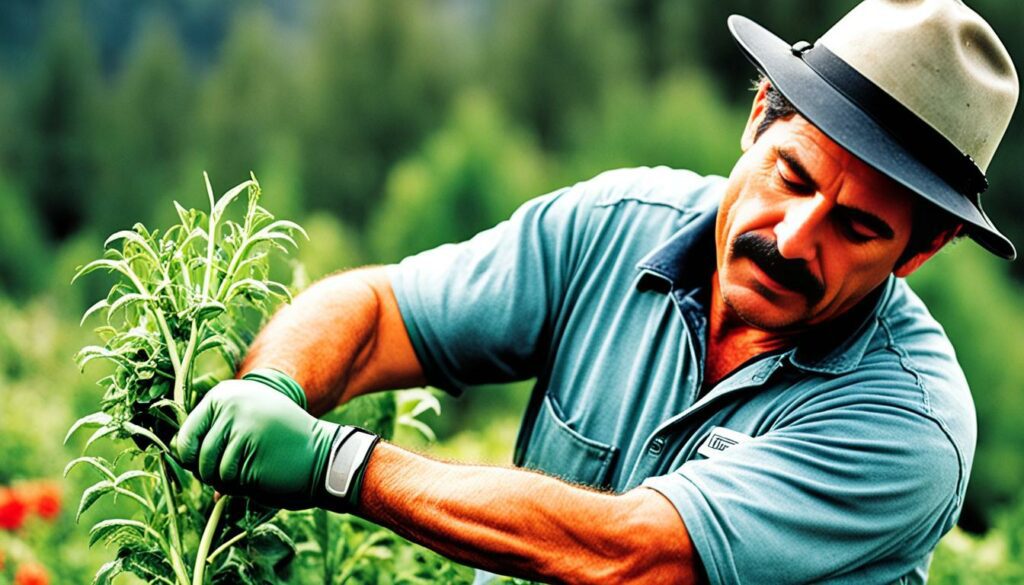
Making tools easy to reach is a top way to cut down on injuries. It helps a lot to keep tools near – within 17 inches around you. Also, it’s important that the tools are not too high. They should be kept below shoulder height to avoid hurting your shoulders over time.
Workers should put the tools they use a lot close by. This way, they don’t need to stretch or bend too much. It also helps to keep their work area at the right height. For standing jobs, a height of 33 to 43 inches suits most people and jobs.
Doing hard jobs in a bad posture often leads to injury. Making sure tools are used the right way helps not just with safety, but also with getting work done better.
Getting enough time to rest is key to preventing injuries from happening again and again. Swapping tasks during the day can stop you from working too hard. Plus, offering jobs where people sit can ease the strain on their backs and legs. This way, different postures can protect against serious injuries.
Special floor mats can also make standing jobs more comfortable. They take the hard impact off your feet and legs. Using these methods helps create a safer and healthier work environment.
To sum up, following good practices in tool use and work positioning, and taking enough breaks, the workplace gets better for farmworkers. This improves both work quality and safety.
Good hand tools are key for making farm work easier and safer. They should be made with the right handle shapes and sizes in mind. This helps avoid injuries and keeps workers comfortable.
The size of the tool’s handle is crucial for comfort and safety. A handle that fits well allows a strong yet relaxed grip. People with smaller hands might need a handle about 1-3/8” wide, while those with bigger hands could hold a 2-1/8” diameter. Tools with adjustable handle sizes can fit everyone, reducing the risk of hand injuries.
Choosing the best materials for tool handles is just as important. Handles made of plastic or rubber are durable and easy to hold. They need to be non-slip to keep workers from straining. These features help cut down on the risk of certain injuries seen in farm work.
Adding ergonomic grips to tools isn’t just about safety – it also makes work more efficient. It cuts down on the need for hard, repetitive actions. This means farmers can work better and with fewer injuries. So, using well-designed tools is a smart move for health and the farm’s bottom line.
| Hand Tool Feature | Benefit |
|---|---|
| Optimal Handle Sizes | Secure and comfortable grip |
| Non-Slip Materials | Enhanced safety and efficiency |
| Durable Construction | Increased longevity and reliability |
Ergonomics is key in avoiding farm injuries, especially in lifting tasks. Understanding and following these rules reduce risks connected to lifting on farms.
A major lifting guideline in agriculture is to not lift from the ground or over your shoulders. These actions strain the back and shoulders, making injuries more likely. Lifting between hand and shoulder levels is recommended. This reduces stress from bad postures and cuts down on work-related health issues. Using handles on containers and moving loads closer to the body helps make lifting safer and more comfortable.
Using mechanical aids significantly helps prevent farm injuries. Dollies, pallet trucks, and carts reduce risks from lifting heavy loads repeatedly. This can prevent severe injuries like sprains, strains, and back pain. About a third of the injuries that keep farmworkers off work are sprains and strains, with a quarter being back problems.
Keeping lifts between hand and shoulder levels lessens the strain on farmworkers. Using aids like dollies and pallet trucks is crucial to cut down on lifting risks, making the farm safer.

Following ergonomic lifting practices and using the right aids is great for the health of farmworkers. Muscle and joint problems, especially in the back, are common among farmworkers due to improper lifting. Sticking to these rules improves both safety and health on the farm, making work more enjoyable and productive.
Stopping back injuries on farms is key because many workers get hurt. About 80% of people in America get back pain at some stage. So, finding and using ways to stop these injuries helps a lot.
Good lift strategies cut down on hurt backs by re-looking at tasks. Changing or skipping tasks that need lifting from the ground or above the shoulders helps. This simple step can lower sprains and strains, a big cause of missed work.
Lifting the right way is important. Bending your knees to pick up things and keeping them close helps a lot. Training on safe lifting is crucial for a healthy back over time.
Having the right gear is key to not hurting your back. Things like hoists, UTVs, and special harnesses protect you. Back braces are good too.
NIOSH says using better ways and tools can cut down on injuries a lot. Less strain with the right equipment means safer and better work.
NIOSH stresses that proper use of lifting techniques and supportive equipment can significantly reduce back injury incidents on farms.
| Type of Injury | Percentage of Work-related Absences | Preventive Measures |
|---|---|---|
| Sprains and Strains | 33% | Proper lifting techniques, use of ergonomic tools |
| Back Injuries | 25% | Supportive lifting equipment, back braces |
Set up farm machines right to help with back health. This means setting up seats well and using mirrors or cameras. Good habits and using the right support gear can change a worker’s life.
Long hours of stooped work can cause pain for farmworkers. But, by using simple ergonomic solutions, we can help a lot. These changes make work safer and more productive on farms.
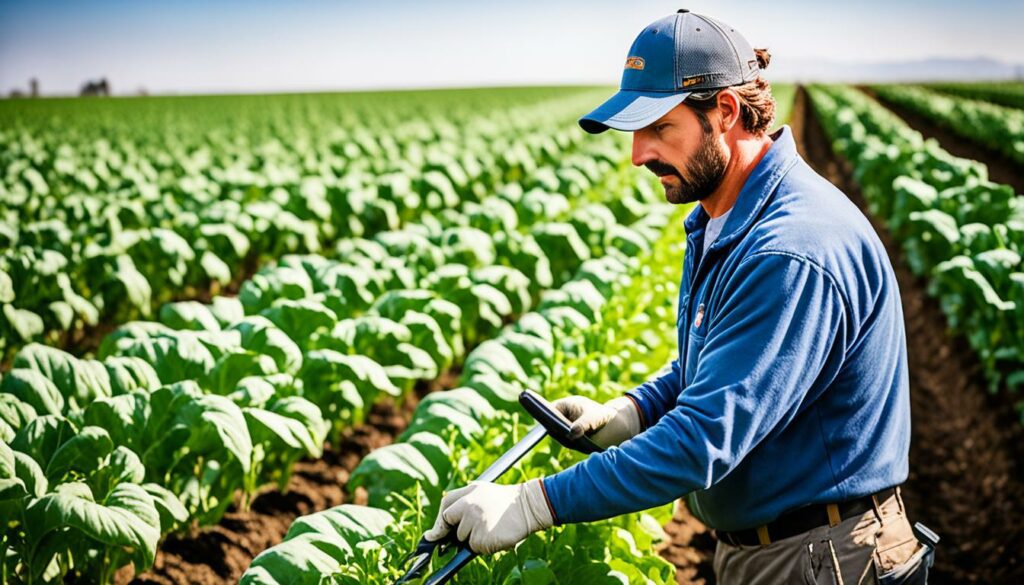
Long-handled tools are great for ergonomic stooped work. They let workers stand more upright. This reduces bending over, helping prevent back injuries. Tasks become easier and less tiring when using these tools.
Giving workers stools is important to avoid stooped positions. It lets them sit during tasks, easing pressure on their back and legs. Stools help lessen discomfort and injury risks, making the farm a better place to work.
Ergonomic solutions really make a difference. For example, in California, back injuries cost over $22 million in workers’ compensation yearly. But, by using the right tools and methods, we can cut these costs. We also improve safety and how productive workers are.
| Injury Type | Occurrence | Cost (California Agriculture) |
|---|---|---|
| Back Injuries | 3,000+ annually | $22 million+ |
| Sprains and Strains | 33% of injuries | Significant |
Farmworkers often get hurt doing repetitive tasks. This happens because their work is hard and keeps demanding the same movements. We will look at how to reduce the risk of these injuries. This includes changing the tasks workers do and designing work areas to be comfy.
One good way to avoid getting hurt is by switching tasks. Work should change often to keep workers safe. This approach lowers the chance of getting hurt from doing the same actions again and again. About a third of farm injuries come from moving in the same way too much. Switching tasks not only makes work more varied but also helps people get more done.
Making work areas comfy is key in reducing injuries. Work areas need to be the right height and offer good support. Platforms for workers can stop them from stretching too high. Putting soft floors in where people milk cows helps too. By making sure tools are easy to get to, workers can avoid painful positions. This cuts down on muscle and joint problems.
Easy changes like those for one crop can work for others too. This shows that using the right tools makes a big difference. With the right training, these efforts can keep workers safe from harm.
| Statistics | Details |
|---|---|
| Annual Back Injuries | 3,000 in California alone |
| Compensation Costs | $22 million in workers’ compensation |
| Common Injuries | Backaches, shoulder, arm, and hand pains |
| Repetitive Motion Injuries | 75% of dairy workers annually |
In short, by mixing up jobs and making work areas comfy, we look out for farmworkers. This approach helps reduce the chances of them getting hurt. Changing how we work, along with proper training, is good for everyone’s health.
Farmworkers are at risk from whole-body vibration while using tractors and forklifts. The key to reducing these dangers is better vehicle ergonomics. One effective way is by using suspension seats. These are designed to lessen the impact of vibrations.

Suspension seats can absorb the shocks and vibrations from bumpy ground. They’re not just for comfort. Their real job is to reduce the harmful effects of vibrations on the body. This can prevent serious problems like Carpal Tunnel Syndrome and bad back pain. Trust me, in agriculture, where back pain is more common, these seats are worth their weight in gold.
Getting the steering seat in the right spot and adding lumbar support is crucial. Adjusting the seat well eases the pressure on your lower back. It also helps you drive better. Lumbar support keeps the lower back’s natural curve, which cuts down on injuries. These simple steps can make a big difference in a farm worker’s health and their work. They lead to both a healthier and a more efficient team.
With 167 agricultural workers getting hurt so bad they can’t work each day, safety and comfort in vehicles couldn’t be more important.
Farm equipment with good ergonomic features makes working safer and more efficient. It’s about making tools that support workers, cut down physical effort, and avoid long-term injuries.
Key ergonomic features include tools that need less force, like tractors. These tools help farmers do their work with less strain and tiredness. For instance, GPS-guided tractors reduce the work needed, making the job easier and less tiring.
Farm equipment is designed to help workers keep a good posture. Adjustable tools and machines are made to fit different body sizes. These features ensure workers stay comfortable and productive.
Good posture tools lessen the risk of muscle and bone problems, making work sessions longer and more effective.
Reducing repetitive motions can prevent long-term injuries. Technologies like automated and self-driving tractors have made farming less repetitive. These new tools not only work better but also lower the risk of injuries due to doing the same action over and over.
Adding these ergonomic features to farm tools benefits farmers in many ways. It keeps them healthy and boosts the profit of the farm. This happens because these tools last longer, needing less repair. Also, tools made with the environment in mind, like electric tractors and biodegradable materials, help reduce harm to the ecosystem.
Having farmers help with ergonomic problems brings many benefits. They give practical advice that makes tools easier to use. This also makes a safer and better working environment.
Farmers working on ergonomics makes sure changes fit what they do. It helps find easy and good solutions. Workers feel these changes are theirs, so they follow safety rules better.
When farmers are part of the process, their ideas make a big difference. They know what works because of their experience.
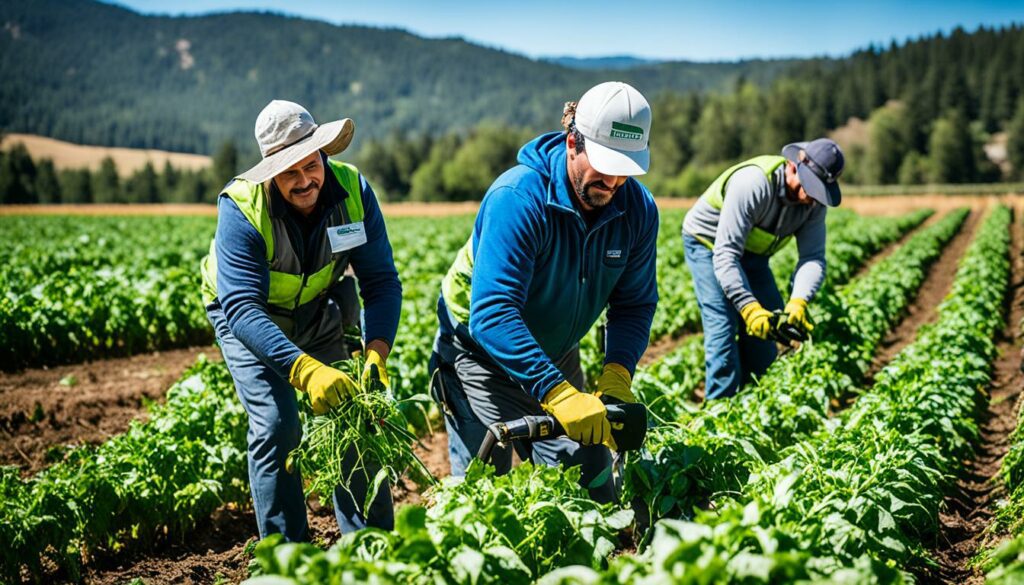
In California, fixing ergonomic issues can save a lot of money. For example, changing tool handles can reduce back pain.
Ergonomic tools for picking fruit have also helped in Korea. They decreased health issues for workers there. Such case studies show how important it is to fit solutions to the job.
Learning from past cases can offer great ideas. For example, using tools with longer handles can prevent back problems. Stools for low tasks also help a lot.These changes have made work safer in places like Korea. Creating tools for specific jobs has really helped there. Custom solutions are key to avoiding health problems in farmers.
Nine peach farmers also took part in a study. They looked at their work, found risks, and made changes. This process improved their health. It shows how much farmers’ ideas can improve things. Participating in finding solutions is good for everyone’s health and how well things work.
New ergonomic designs are changing how safe and effective farming is. These improvements are seen through various case studies and success stories. They show how new tools can cut down on injuries and boost productivity.
Studies show that ergonomic tools in farming are making a big difference. For example, special harvest carts have cut down on back injuries for farm workers. In California, the cost of over 3,000 back injuries reaches above $22 million each year. Using these special tools, farms can save money and keep their workers safer.
Weeding stands and new rakes for picking berries are making a change. They make it easier to work and reduce the risk of pain and injuries. Also, by using certain tools like liquid applicators and markers, workers can avoid musculoskeletal problems. These tools help prevent health issues, which are the biggest cause of disability for workers.
Many success stories are coming from the use of ergonomic tools in agriculture. Tools made specifically for women, like those from Green Heron Tools, are getting praised. McCoy, Carruth, and Reed found that making tools for women’s needs is important. Green Heron Tools, with help from a USDA grant, shows how custom designs increase safety and productivity on farms.
The i-Three Corp study, looking at manure forks that use wearable tech, is changing how we see tools for different workers. A cooperation between groups focusing on health and wearable tech helped a lot. This work pushes for ergonomic tools that fit all types of users.
| Innovative Tool | Impact |
|---|---|
| Specialised Harvest Carts | Reduced back injuries |
| Weeding Stands | Minimised repetitive strain |
| New Rakes for Berries | Diminished physical strain |
| Liquid Applicators | Prevention of WMSDs |
| Green Heron Tools | Enhanced tool usability for women |
| Manure Forks (i-Three Corp) | Improved usability insights |
These positive examples show how important it is to bring in new ergonomic tools in farming. Case studies and successful stories keep pushing for better and more widely used practices. They lead the way to farming practices that are both safer and more efficient.
Making simple, low-cost adjustments improves farmworkers’ safety and comfort. This is done by changing tools and improving their work areas. These changes help reduce injuries without costing a lot.
There’s a lot farmers can do to make their work tools easier to use. They could add soft handles to make tools more comfortable. Or make tools longer to reduce bending and back strain. These simple fixes cut down on muscle and joint problems.
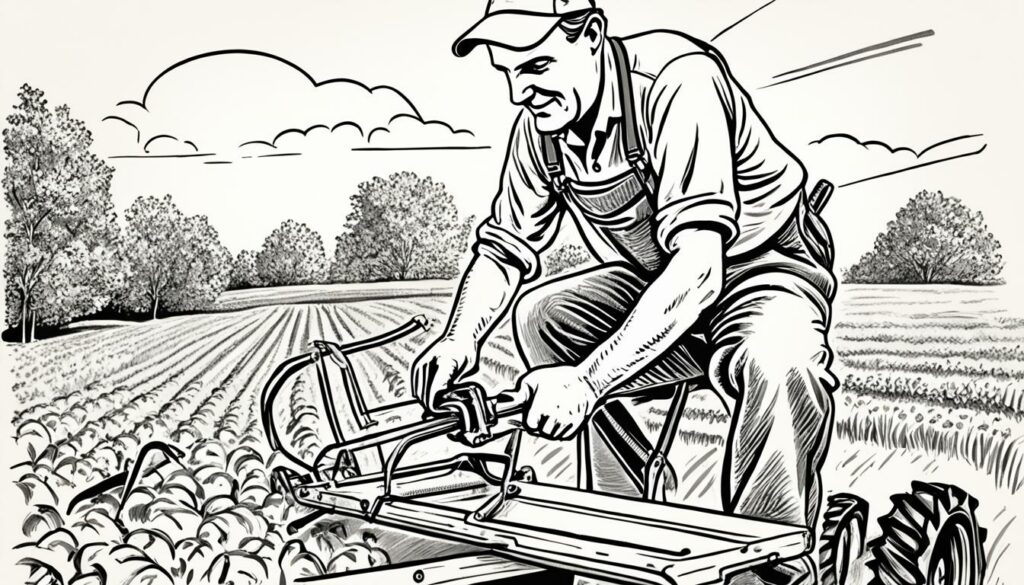
Improving how work areas are set up is very important. Even small changes, like raising the height of benches, can help. This also includes having the right seats for tasks that usually make workers bend a lot. Making these adjustments early can keep the workers healthy and more efficient.
| Type of Change | Benefits | Examples |
|---|---|---|
| DIY Tool Modifications | Reduces strain and increases comfort | Padded grips, longer handles |
| Workstation Adjustments | Decreases injury rates and improves efficiency | Adjustable workbenches, seating options |
Ergonomic farming practices are vital, especially with the high numbers of injuries in farming. Agriculture ranks second in injuries, deaths, and illnesses. This shows we need to act fast to make farming safer. MSDs are common among farm workers, making ergonomic solutions critical.
Back pain is a big issue, affecting over half of all farm workers. This pain is also felt by nearly half of those employing them. Ergonomic changes, like better harvesting tools, have cut down this pain. These include using smaller tubs and changing ladders’ rungs.
Ergonomic farming helps workers’ health and boosts productivity. It lowers the physical strain with smart tools and gadgets. This keeps the workforce both healthy and productive. The world faces huge numbers of illnesses and deaths from work, highlighting the need for change.
Making farms more ergonomic is also a smart business choice. It’s an investment that saves money in the long run. The European agriculture sector spent 55 billion Euros in one year due to accidents. Preventing health issues in young farm workers is crucial for the future of farming. Ergonomic improvements keep workers healthy and businesses strong.
Many farmworkers face back, shoulder, and arm pain, and hand issues. These are work-related and from tasks like lifting heavy objects. Doing the same movements over and over and bending for a long time also cause these pains.
Injuries make many farmworkers miss work. This is often because of sprains, strains, and back injuries. As a result, farms aren’t as productive as they could be. It also means the businesses they help might not make as much money.
Ergonomics is about making work fit people better. It makes work safer and more efficient by looking at how the body works. This includes the tasks we do, the tools we use, and where we do them.
Ergonomic design changes tools, work rules, and how workers sit or stand. By doing this, it helps avoid musculoskeletal disorders. It also makes work better and safer.
Ergonomic farm tools are made to suit a worker’s body and the job. They lower the chances of getting hurt from working too hard. These tools might have adjustable parts, soft handles, and designs to avoid bad bending or twisting.
To use tools safely, they should be close but not too high. This stops you from hurting yourself while working. It’s also good to change tasks sometimes, so your body has time to recover.
A handle that fits your hand well is ideal, with your forefinger and thumb slightly touching. Handles from 1-3/8” for smaller hands to 2-1/8” for bigger hands work best. They should also be made of materials that help you hold on safely.
To lift safely, keep things between your hand and shoulder. Add handles to what you’re carrying and use tools like dollies. This makes lifting less risky for your back and muscles.
Stop and think about how you lift heavier things. Use tools that support you, like back braces, and learn to lift safely. Tools designed with how you move in mind can also protect your back.
Long-handled tools mean you don’t have to bend as much. Stools let you sit while working, which is easier on your back. Both can make some jobs much less of a strain.
Changing what you do can stop your body from getting too tired or strained. Having a good setup, like the right chair or bench, means you won’t hurt yourself while working. Task rotation and the right setup help you stay healthy while doing your job.
Suspension seats stop bumps from the road from hurting your back. Good support in your seat and for your lower back means you’re more comfortable driving. This makes your time behind the wheel less tiring and safer for your back in the long run.
Ergonomic farm equipment should make jobs easier, not harder, and help you move naturally. These changes mean less effort and a lower risk of getting hurt while working.
Getting workers to help solve problems with how they work makes everyone safer. It’s shown to bring together what workers know and what managers can do. This team effort can make working better and prevent injuries.
New ways of making work safer and more comfortable have big benefits. They’ve made some jobs less likely to cause injuries. This means workers can do their jobs more efficiently and without as much risk.
Simple fixes to how tools and work areas are set up can fit work to the worker better. Even without spending much, these small changes can make work safer and more pleasant.